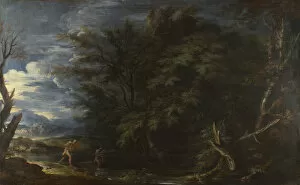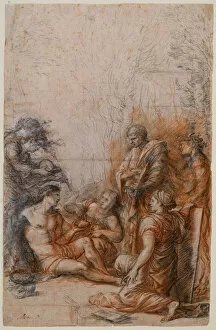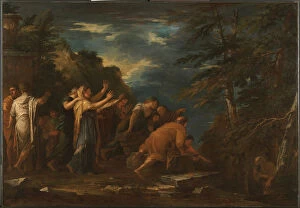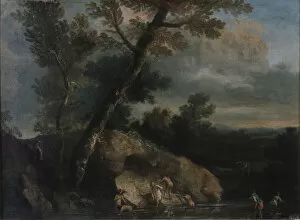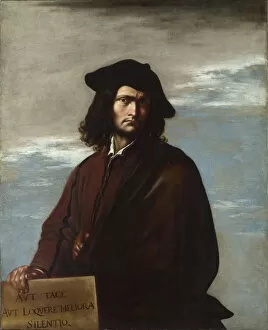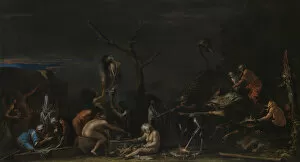Salvatore 1615 1673 Collection
Salvatore Rosa (1615-1673) was a renowned Italian artist known for his captivating and enigmatic works
All Professionally Made to Order for Quick Shipping
Salvatore Rosa (1615-1673) was a renowned Italian artist known for his captivating and enigmatic works. His paintings often depicted mythical and allegorical scenes, showcasing his deep understanding of literature, philosophy, and the human condition. In "Astraea leaves the earth, " Rosa portrays Astraea, the Greek goddess of justice, bidding farewell to humanity as she ascends to the heavens. This piece reflects Rosa's fascination with celestial themes and his contemplation of mankind's moral decline. Rosa's self-portrait reveals a brooding figure with intense eyes that seem to hold countless untold stories, and is through this introspective gaze that we catch a glimpse into the artist's complex psyche and creative genius. "Landscape with Mercury and the Dishonest Woodman" transports us to an idyllic setting where nature intertwines with mythology. The painting captures a moment frozen in time when Mercury confronts a deceitful woodman who has betrayed his trust. Through this work, Rosa explores themes of deception and consequences. In "Penitent Saint William of Maleval, " Rosa depicts a saint immersed in solitude amidst rugged terrain. The painting exudes an aura of melancholy as it delves into themes of redemption, repentance, and spiritual enlightenment. "The Return of Astraea" showcases Rosa's mastery in capturing ethereal beauty on canvas. Here we witness Astraea descending from above, symbolizing hope for humanity's restoration after periods of darkness or chaos. Rosa also ventured into exploring psychological depths through works like "The Abandoned Oedipus. " In this piece inspired by Greek tragedy, he delves into themes such as fate versus free will while evoking empathy for those trapped within their own destinies. Through pieces like "Democritus and Protagoras, " Rosa merges artistry with philosophical musings. He invites viewers to contemplate ancient wisdom while questioning our perception of reality itself.



